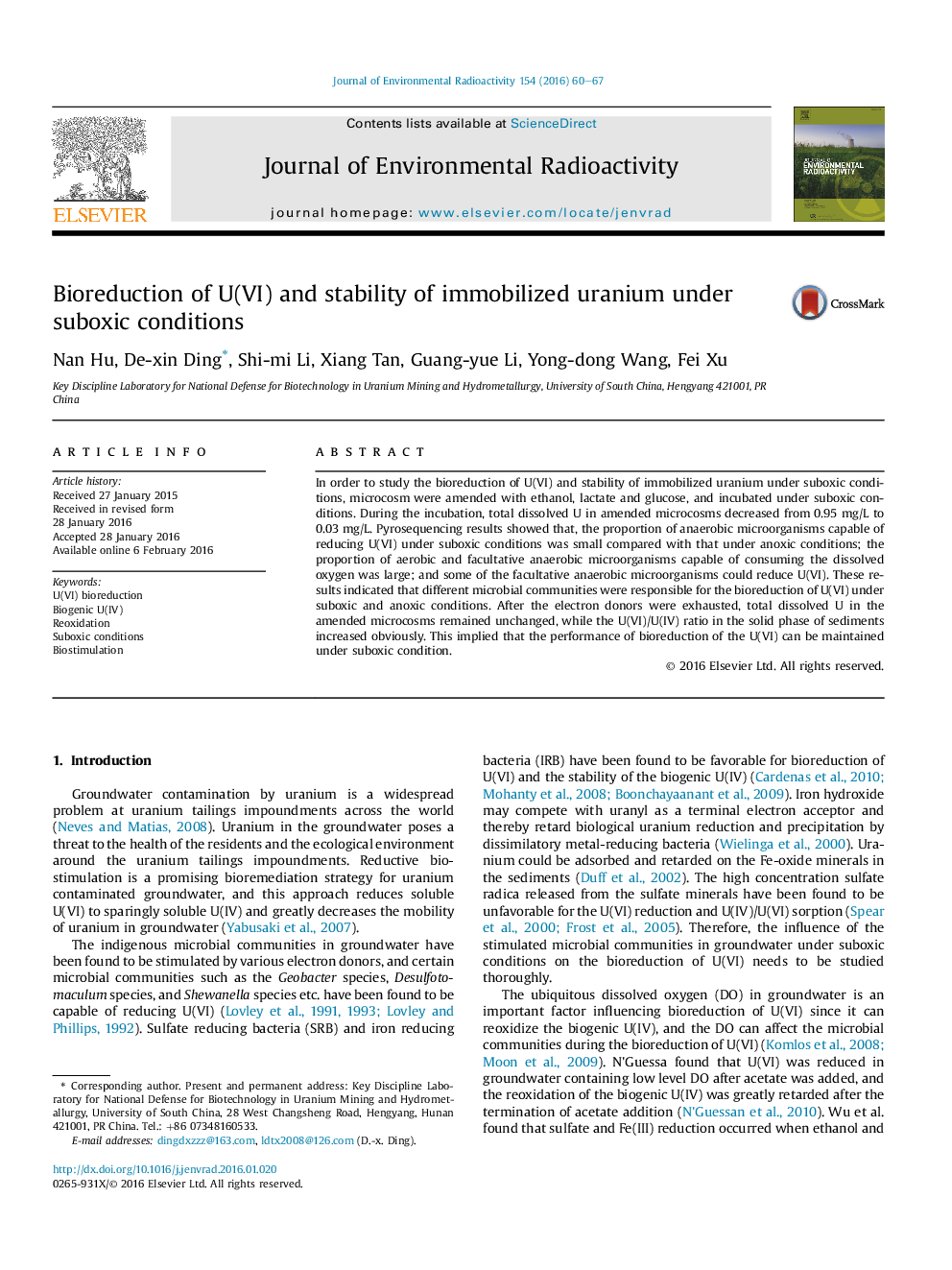| Article ID | Journal | Published Year | Pages | File Type |
|---|---|---|---|---|
| 1737748 | Journal of Environmental Radioactivity | 2016 | 8 Pages |
•Aerobic and facultative anaerobic microorganisms were stimulated.•The bio-reduced U(IV) was not totally oxidized under suboxic condition.•Anaerobic and facultative microorganisms reduced U(VI).•Uranium concentrations did not rebound due to adsorption.
In order to study the bioreduction of U(VI) and stability of immobilized uranium under suboxic conditions, microcosm were amended with ethanol, lactate and glucose, and incubated under suboxic conditions. During the incubation, total dissolved U in amended microcosms decreased from 0.95 mg/L to 0.03 mg/L. Pyrosequencing results showed that, the proportion of anaerobic microorganisms capable of reducing U(VI) under suboxic conditions was small compared with that under anoxic conditions; the proportion of aerobic and facultative anaerobic microorganisms capable of consuming the dissolved oxygen was large; and some of the facultative anaerobic microorganisms could reduce U(VI). These results indicated that different microbial communities were responsible for the bioreduction of U(VI) under suboxic and anoxic conditions. After the electron donors were exhausted, total dissolved U in the amended microcosms remained unchanged, while the U(VI)/U(IV) ratio in the solid phase of sediments increased obviously. This implied that the performance of bioreduction of the U(VI) can be maintained under suboxic condition.
